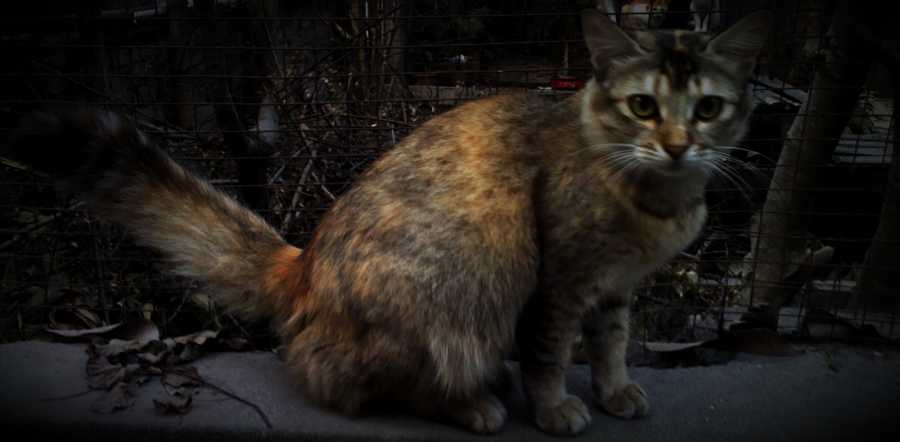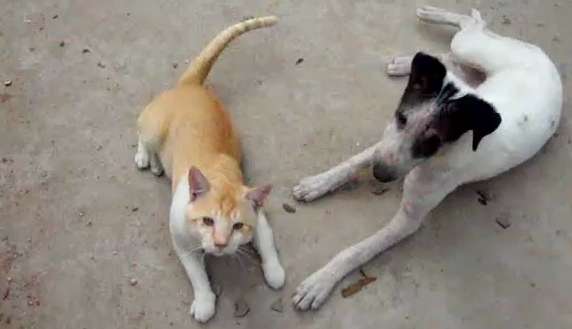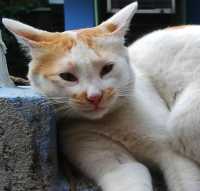Cat Litter, Strip Mining and Environmental Issues

Sodium Bentonite is one of the most popular constituents of clump cat litter. Mining bentonite makes business sense only when it is found close to the surface of the earth. Therefore, it is strip mined for cat litter. The top layer of the earth (the overburden) is removed to take away the clay. Even though there are laws that the land must be left as it was and filled and flattened, how scrupulously such laws are followed is anyone’s guess.
Coal is also obtained through strip mining. The following excerpt is both relevant and significant:
The Surface Mining Control and Reclamation Act (SMCRA) was passed in 1977. This established federal regulations for surface mining and required federal permits for mining on federal land. The act also created the Office of Surface Mining (under the Department of the Interior) which was charged with restoring abandoned surface mines and enforcing the SMCRA regulations.
Difficulties with Reclamation Efforts
In general, however, reclamation can be very difficult. This is because the original ecosystem removed by the strip mine represents a delicate balance of plants, animals, microbes, and soil nutrients, and soil structure resulting from eons of plant succession and nutrient fluxes in and out of the system. Re-establishing this balance in the short-term is at best a scientifically challenging endeavor.
So much for post strip mining replenishment of the environment.
AN APPEAL TO OUR READERS:
EMPATHY has rescued and sheltered more than a hundred cats and dogs since 2002.
Please visit Polarintertia.com for a wonderful (or hideous) slideshow about what strip mining does to mountains. It will not be very different from watching scenes depicting animal abuse and mutilation. Here is an image that shows the process (Click on the image on the right to view it in original size).
The extracted bentonite clay is dried under extreme heat and turned into a powder or flake. The finer quality of powder that comes out of the litter making process is used in the cosmetic industry. The damage that strip mining does to the land, the cost of fuel to transport the mined bentonite to the drying facility and the use of petroleum products to dry the material make the production of clump cat litter ridiculously detrimental to the environment. Add to that the fact that used clay litter is not biodegradable and only adds to landfills.
(Even organic litter degrades at a snail’s pace in the landfills since the waste is packed in too tightly for oxygen to circulate optimally).

You are not supposed to flush cat litter down the toilet if you live near the sea or a river
Toxoplasma gondii, a parasite sometimes found in cat feces, may be responsible for killing sea otters.
An amendment to the California Fish and Game Code provides:
The Legislature finds and declares that several types of nonpoint source pollution are harmful to sea otters, and that scientific studies point to links between cat feces, the pathogen T-ghondii, and sea otter mortality. The Legislature further finds and declares that efforts to reduce the flushing of cat litter and cat feces are steps toward better water quality in sea otters’ natural habitat.
Any cat litter offered for sale in this state shall contain one of the following statements:
“Encouraging your cat to use an indoor litter box, or properly disposing of outdoor cat feces, is beneficial to overall water quality. Please do not flush cat litter in toilets or dispose of it outdoors in gutters or storm drains.”
A general statement that encourages the disposal of cat feces in trash and discourages flushing cat feces in toilets or disposing of them in drains. (See California Fish and Game Code Section 4501).
As part of its educational outreach regarding toxoplasma, the Monterey Bay Aquarium suggests that guardians of indoor/outdoor cats provide an outdoor litter box as well as an indoor one.
Landfills, then, seem like the only option for used cat litter, and the less space for us and our cats as more and more non-biodegradable cat litter accumulates in the landfills.
However, if you are not living near the sea, please refer to our comprehensive guide to choosing the best Flushable Cat Litter.
Strip Mining and Clay or Silica Cat Litters may be redundant, after all
Whether or not we should seek out alternative sources of power is a question reserved for elsewhere. However, destroying the planet and packing it with waste is probably not the best solution for anyone, human or feline. As far as cat litter is concerned, with all the organic alternatives available in the market, strip mining for cat litter does appear to be somewhat redundant. Stripping the surface off the earth for cat litter that is, in fact, harmful for cats hardly makes sense.
Pet owners choose the most effective cat litter, the clump cat litter, without realizing where it comes from or where it will go. These are people who are already going that extra mile to care for a different species. Surely, if they were informed of the dangers of these cat litter varieties to their pets as well as to themselves and to the environment in general, they would opt for certified organic (very limited choices) or natural cat litter (nine brands reviewed), instead.
Please visit our homepage (Overview) for a comprehensive guide to what the most suitable litter for cats should be like
RESOURCE/REFERENCE:
BEINGGORGEOUSLYGREEN.BLOGSPOT.COM | EARTHOBSERVATORY.NASA.GOV | GREATMINING.COM | GREENLIVINGTIPS.COM | PETGURU.WORDPRESS.COM | PLANETSAVE.COM | NMSEA.ORG







I have lung issues can you please just direct me to a cat litter that clumps and does not track so bad I am 81.I would appreciate it pIease ! I tried several , they all track so bad, every night I have to vacuum the whole house, it is so exhausting. What a waist of money, I bounced so many out in the trash! then I learned all the bad stuff in the litter. I hope that’s not how I got the big C word. I just need some help . Poor Kitty need Litter soon, thank you
Apologies for the (very) late reply, Diane. My computer was down the entire month and so was I, because of post-corona IBS – but that’s a long sob story!
To answer your query, if you haven’t already found something useful, please take a look at this comparison chart:
https://kapush.org/cat-litter/best-eco-friendly-cat-litter/#chart
I hope you find something there that addresses your problem. 🙂
Carbonaro, sorry to hear about your cat. No one lives forever but to lose our loved ones because there are legal poisons in the market is unacceptable. Thank you for sharing your experience – just hope people take note of it …
litter containing sodium bentonite was, i beleive, responsible for the death of my eight year old cat Ace just three weeks ago.
Typical progression, cats clean themselves and ingest the sodium bentonite, which destroys the small intestine. Ace, in his last few months, even advanced to eating the litter directly from fresh litter boxes; the x-rays of his gut show the concentration of swollen (clumped) litter dispersed throughout his intestinal tract. When the veternarian tried to biopsy Ace’s intestines, the cutting instrument would just glance off the cats hardened intestine, making biopsy impossible. Ace was dead within a week.
The most curious thing was that after removing the clumping litter from the house, it occurred to me to test it for radioactivity using an Inspector USB radiation detector. Establishing a background level of 32 CPM over three ten minute long timed counts, the same length counts determined the litter to be emitting 60-67 CPM, a 100% increase. For your sake as well as your pets, go with the natural formulations. Or buy a shovel.